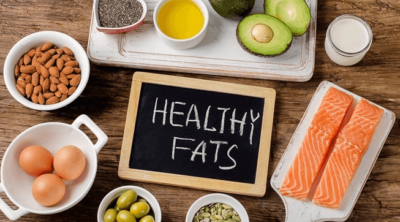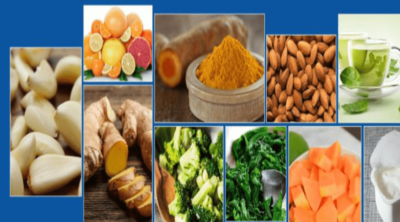
Using the right type of meat cut is absolutely crucial if you want a moist, flavorsome portion of pork. Let’s take a look at the different kinds of pork cuts and how many calories each kind contains. Also, we’ll take a look at why it is a healthy dietary meat when enjoyed in controlled portions.
Pork is a succulent, highly sought-after kind of meat, that doesn’t fail to impress a meat lover’s taste buds, if cooked correctly, that is. It comes from pig meat, or Sus domesticus. Islam and Judaism prohibit the consumption of this meat. These animals have been domesticated from as early as 5000 BC. Being a rich source of cholesterol, pork must be enjoyed in small quantities a couple of times a month.
Types of Pork Cuts
Depending on which part of the pig you slice and dice, the meat will either be layered with fat, without it, or tough to rip apart with one’s teeth. Let’s take a look at the different cuts of pork and how its caloric values differ.
Calories
| Type | Quantity | Caloric Value |
| Grilled Pork Belly Rashers | 3.5 oz. | 400 |
| Baked Pork Chops | 4.9 oz. | 302 |
| Broiled or Cooked Pork Loin Whole | 3 oz. | 206 |
| Cooked or Roasted Pork Loin, Country-style Ribs | 1 piece (193 g) | 477 |
| Broiled or Baked Pork Chops | 3 oz. | 118 |
| Raw Pork Belly Rashers | 3.5 oz. | 387 |
| Broiled or Baked Pork Chops | 100 g | 240 |
| Cooked or Roasted Pork Tenderloin | 1 piece (333 g) | 476 |
| Raw Pork Chops | 3.5 oz. | 330 |
| Baked Pork Chops | 4 oz. | 250 |
| Grilled Pork Chops | 3.5 oz. | 340 |
| Pork Pie | 3.5 oz. | 390 |
| Broiled or Cooked Boneless Loin, Sirloin Chops | 3 oz. | 164 |
| Boiled Pork Trotters | 3.5 oz. | 290 |
| Raw Pork Sausages | 3.5 oz. | 370 |
| Grilled Pork Sausages | 3.5 oz. | 290 |
| Broiled or Cooked Pork Loin Center Rib Chops | 3 oz. | 189 |
| Broiled or Cooked Sirloin Chops, Bone-in | 3 oz. | 181 |
| Whole Foods Pigs in a Blanket | 1 piece | 350 |
| Bob Evans Homestyle Pigs in a Blanket | 1 piece | 170 |
| Raw Pork Leg | 3.5 oz. | 270 |
| Roasted Pork Leg | 3.5 oz. | 290 |
| Cooked or Roasted Pork Shoulder Chops, Whole | 1 cup diced | 311 |
| Lean Pork Leg | 3.5 oz. | 200 |
Nutritional Value of Pork
Nutritional Chart
| Nutrient Content | Center Cut Pork Chops (100 g, Calories = 167) |
Boneless Pork Loin (100 g, Calories = 145) |
| Sodium | 378 mg | 358 mg |
| Fat | 10 g | 7 g |
| Saturated Fat | 4 g | 3 g |
| Protein | 19 g | 19 g |
| Iron | 0.6 mg | 0.6 mg |
| Zinc | 1.5 mg | 1.6 mg |
| Potassium | 307 mg | 310 mg |
| Cholesterol | 52 mg | 49 mg |
| Vitamin C | 1.7 mg | 1.3 mg |
Health Benefits
Pork isn’t universally touted as the most healthiest of meats out there, but a little bit of this meat here and there in your diet can aid you in more ways than one.
Iron
- Provides energy to the body.
- Hemoglobin in red blood cells is maintained.
- Curbs anemia.
Riboflavin
- Aids proper functioning of the nervous system.
- Good for the skin and eyes.
- Repairs and maintains body tissues.
Protein
- Helps maintain bodily functions.
- Repairs body tissues.
- Energizes the body
- Multiplies antibodies to help fight against infection.
Vitamin B12
- Nerve tissues are kept healthy.
- Red blood cells are maintained.
- Aids metabolism.
- Promotes genetic material growth.
- Helps in cell function.
Zinc
- Enzymes and hormones are formed.
- Strengthens the immune system.
- Protects one’s bones.
- Makes the body stronger against infection.
Niacin
- Skin is maintained.
- Nervous system is regulated.
- Energy is released.
- Digestive tract function is regulated.
Thiamine
- Keeps one’s appetite maintained.
- Muscles and nerves are repaired and built.
- Carbohydrates release energy.
Fat
- Skin is kept healthy.
- Energy is expelled.
- Fatty acids that the body requires are supplied.
- Body parts are kept insulated.
- Normal growth is maintained.
- Vitamins are transported to all parts of the body.
Pantothenic acid
- Fuels the body by burning carbohydrates, protein, and fat in the body.
- Helps release energy.
- Builds cholesterol which acts as a building block.

